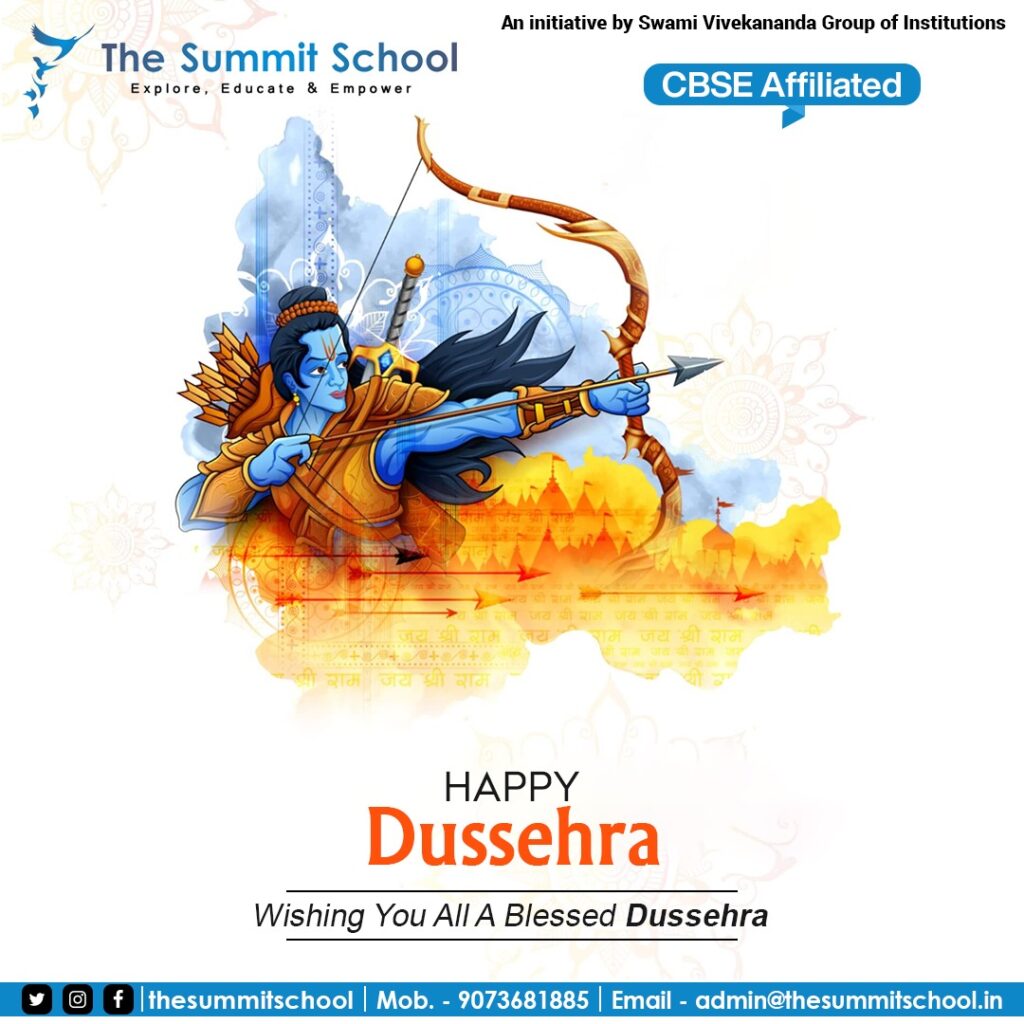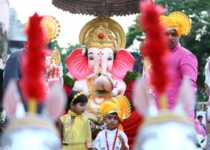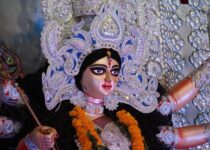Dussehra: Celebrating the Triumph of Good over Evil
Dussehra: Celebrating the Triumph of Good over Evil – India is a country of great cultural heritage. Indians celebrate a wide variety of festivals each year. Each festival has its own significance and link with our religious texts. Dussehra marks the victory of Lord Rama over the ten-headed demon Ravana. Each year, Dussehra is celebrated on the tenth day of Navaratri according to the Hindu calendar. This day falls during the months of September or October according to the Gregorian calendar. Navaratri begins a chain of Hindu festivals like Dussehra, Ahoi, Karwachauth, Diwali, and Bhai Dooj. This entire period is marked with great devotion and celebration by Hindus distributed all over the world. This period is celebrated with joy especially in India when people gather together to pray and celebrate together.
As mentioned above, Hindu festivals hold great importance in Hindu Mythology. For instance, Navaratri is celebrated over a period of nine days which signifies the period taken by Ma Durga to defeat the buffalo demon Mahishasura. These nine days are marked with regular prayers and fasting all over the country. The tenth day, which is also celebrated as Durga Puja in the eastern states of the country, also coincides with Dussehra commemorating the defeat of Ravana by Lord Rama. Both of these festivals signify the ultimate victory of good over evil. These festivals always bring a lesson for the devotees to uphold the virtues of truth, honesty, and righteousness in their hearts.

Dussehra is also known as Vijayadashmi. Both of these names have immense etymological importance. Dussehra is made up of two root words: “dus” meaning ten and “hara” means defeated. Thus, it means the defeat of the ten-headed demon Ravana. Vijayadashmi is also made of two root words: “vijay” meaning victory and “dashmi” meaning ten days. Therefore, Vijayadhashmi means victory on the tenth day. It is believed that Ravana had ten heads because he had deeply studied the four Vedas and six Upanishads.
Therefore, he possessed the knowledge equivalent to ten scholars. It is also believed that the ten heads symbolised his possession of five gyan indiryas (knowledge) and five karma indriyas (action). Ravana was a devout follower of Lord Shiva and with his persistent prayers, he had gained immense power from Lord Shiva. However, Ravana was a cruel king who went after materialistic pleasures, lust, and women. He had established a rule of cruelty over the regions of Lanka.
Ravana’s family was equally influential and arrogant with power. His sister Suparnkha believed herself to be quite beautiful and in her pride tried to seduce Lord Rama. Lord Rama, during this period, was serving a period of exile from his kingdom and was accompanied by his wife Devi Seeta and his younger brother Lakshman. On being approached by Suparnkha, Lord Rama politely refused her advances. When she reacted arrogantly, Lakshmana cut her nose instantly. This was actually the cause of the feud between Ravana and Lord Rama. To avenge his sister’s humiliation, Ravana captured Devi Seeta and carried her to Lanka. He was mesmerised by her beauty and held her captive with the intention that she would concede one day. Devi Seeta spent the entire period as a slave kept in isolation.
Meanwhile, Lord Rama and Lakshmana organised an army of monkeys “vanar sena” in order to attack and defeat Ravana. Ravana was finally defeated on Dussehra. Since Ravana was a symbol of a powerful dictator who indulged himself in greed, lust, and violence, his defeat serves as a lesson to devotees. Lord Rama himself was the incarnation of Lord Vishnu. His character holds great spiritual importance. He was known as “maryada purshottam” which means that he was the embodiment of the perfect man. He had all the power and might in the world but was at the same time humble, kind, and righteous.
He was the perfect king of Ayodhya who gave up on his kingdom and went on an exile for fourteen years to fulfill a promise he once made. He was a great husband as well. He never put eyes on another woman and fought bravely to bring back his wife. The entire Ramayana epic talks about his goodness and spiritual well-being. It is this righteousness that every human being must seek. Dussehra upholds this lesson of good vs evil above all else. No matter how powerful evil becomes, goodness will win in the end.
Dussehra thus remains the day of celebrating the triumph of good over evil. It reminds us to be kind and preserve our innocence. The festival is celebrated with great joy all over the world. Several rituals and customs are followed. Pujas are organised and the effigies of Ravana, his brother Kumbhkarna, and his son Meghanatha are burned with crackers inside them. It is believed that Kumbhkarna was also a great scholar who defeated many men in the battle. Meghanath was also a mighty warrior who had defeated Lord Indra and possessed Indra Lok. He was also known as Indrajit.
However, since they were on the wrong side in the battle, they had to meet their fate of defeat and death. It is believed that Lord Vishnu took birth as Lord Rama on earth to end the despotic rule of Ravana and his successors as they had brought havoc on earth and heaven alike. Ramayana also carries the tale of Hanumana who assisted Lord Rama in the battle. People all over the world worship Hanumana for his bravery and devotion to Lord Rama. Ravana’s other brother Vibhishana who also assisted Lord Rama was finally coronated as the king in Lanka.
Thus, the entire epic holds the supreme importance of goodness and righteousness. It serves as a reminder for us and upcoming generations to be kind, truthful, and humble, no matter what position or material wealth we can acquire. It lays the qualities of a good ruler and leader who believes in upholding the society as establishing a rule where spiritual importance holds the highest value. Thus, the celebrations are marked with the enactment of Ramayana on stage. Families watch these enactments together and discuss the values of goodness among themselves. This helps in building a society where each individual is taught about the importance of goodness from a young age onwards. This festival also brings an opportunity for everyone to reflect on their actions in the past followed by a desire to become a better individual in the upcoming year.
The Summit School is way ahead in teaching young children about the importance of celebrating Dussehra. The school organised a collective event where students were provided with a platform to express the importance of these rituals and their teachings. Children were also provided with the opportunity to indulge in creative expressions that went along with the celebrations. Each year, the festival is celebrated with great enthusiasm in the school where teachings and enjoyments go hand in hand.
The Summit School has established a great reputation among the best CBSE schools in Kolkata. The school upholds the idea of holistic education where each child is taught and trained in character building, physical health, personality improvement, along with the traditional lessons for cognitive development. Students here get immense opportunities for artistic expressions and creative development. The school is a safe space for children to learn and grow into responsible beings of tomorrow. Enroll your child at the best CBSE school in Kolkata today!
We shared about “Dussehra: Celebrating The Triumph Of Good Over Evil” in this post, Enroll your child at the best Cbse Schools in South Kolkata, Admission are open contact us today! Or call us at +91-9073681885. Follow us on our Facebook page & Twitter Social Media Profile for latest updates. Get Your Child’s Admission Best English Medium School in Kolkata.




